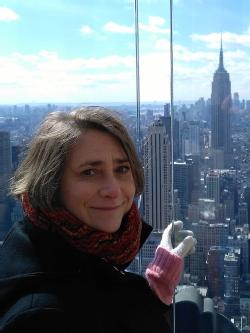Lucinda Towler
- American art 1900 - 1970
- representations of the female body
- the social construct of gender
My research is widening the discussion of the work of American artist Tom Wesselmann beyond the existing constraints that a pop art label has imposed upon it. I am examining the images of female nudes which Wesselmann produced in terms of the social, cultural and political landscape of the 1960s and explore the ways in which they adhered to, or subverted, existing gender roles and stereotypes. To do this, I am primarily looking at Wesselmann’s series of 100 Great American Nudes and his Bedroom Paintings and approaching them with reference to three individuals whom the artist cited as being influential.
Wesselmann’s work has been compared to Matisse’s more than any other artist, yet much of what has been written fails to go beyond a discussion of the apparent visual similarities inherent in both men portraying women in interior settings. With reference to Matisse’s paintings of odalisques I question the appropriateness of imposing this label onto Wesselmann’s nudes whilst examining how both artists used female figures as a vehicle for displaying national identity. I am also interested in the way in which critics, and the American press, emphasised both artists' personal attributes as exemplifying masculine, domestic normativity when the erotic content of their work was called into question before taking a closer look at the role of critical discourse in inviting the observer to adopt a male gaze even when the images are discussed in terms of formal concerns rather than subject matter.
It is through an examination of Henry Miller’s writing, and particularly the novel Tropic of Cancer, that I look at Wesselmann’s assertion that the author helped him to come to terms with the sexual aspects of his own work. Questioning whether Wesselmann was attempting to break down taboos surrounding sex and the body, shock a puritanical society or exert his right to exercise the first amendment I am comparing the ways in which Wesselmann and Miller used similar methods of describing female bodies and suggest that Wesselmann’s images are, in many ways, the visual equivalents of Miller's style of writing - one which championed overtly heterosexual virility through descriptions of the fragmented nude. I also disprove the commonly held belief that Wesselmann's work was singled out and vilified by the women’s rights movement.
My final area of research examines whether Wesselmann’s work, or indeed pop art in general, lends itself to being studied in terms of the aesthetic theory posited by John Dewey in his publication Art as Experience. As an American pragmatism Dewey proposed that art should be rooted in the experiences of the everyday and was relevant to society because of this. With this in mind, I investigate whether Wesselmann’s Great American Nudes can be seen as visual interpretations of having ‘an experience’ – the point at which Dewey believed everyday events could be seen in aesthetic terms and aim to determine whether the erotic nature of Wesselmann’s images might be viewed accordingly and whether this challenges the assertion that he objectified women. Subsequently, I ask whether this raises questions regarding ownership of the experience.
Having assisted in gaining WIHEA funding, I am currently involved in a project overseeing three undergraduate co-creators for the development of a subject-specific, online bridging module to help students with their transition from first to second year.
In 2018 I was awarded a DARO/HRC Fellowship which allowed me to travel to the Wesselmann Estate in New York to undertake research in the artist’s studio.
Since 2017 I have tutored the first year undergraduate core model History of Art and Interpretation which involves students visiting Waddesdon Manor in Buckinghamshire to gain first hand experience of looking at art-objects and developing their visual and analytical skills.
In 2016-2017 I was involved with the Tate Gallery’s research project Refiguring American Art funded by the Terra Foundation for American Art. I produced a number of summaries which examined the making, meaning and reception of artworks in the Tate collection for publication on the gallery’s website.

